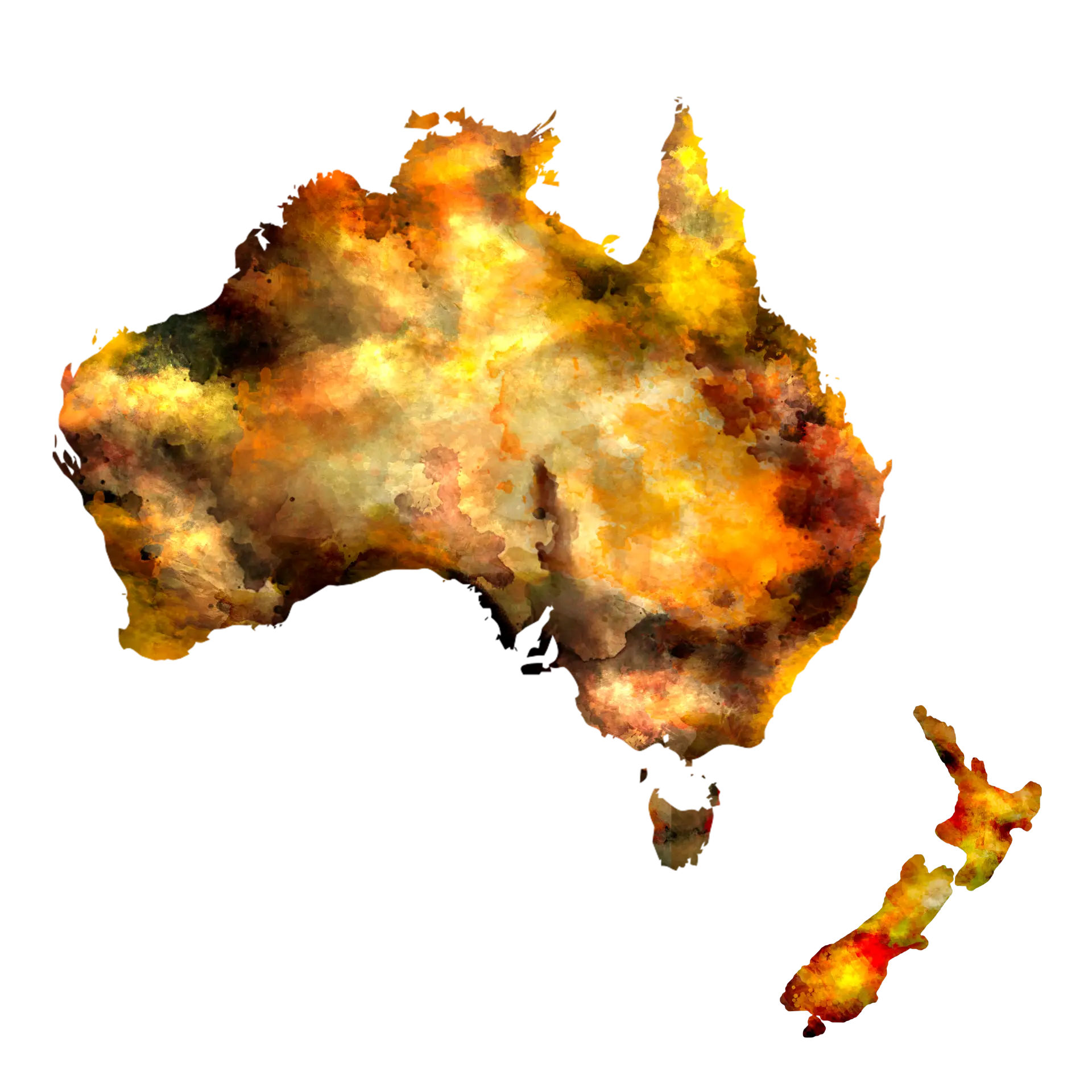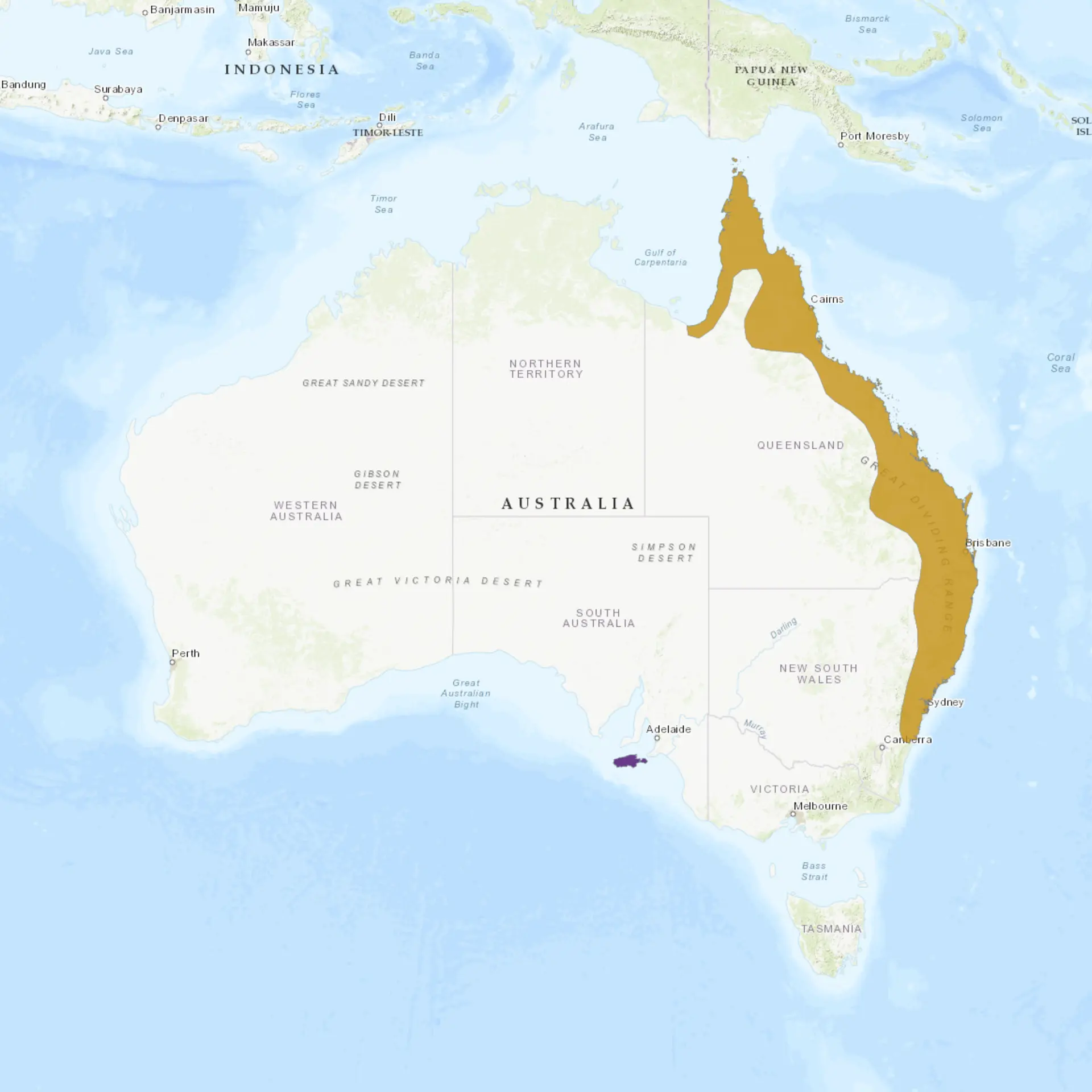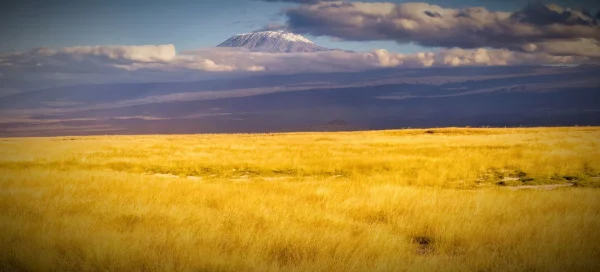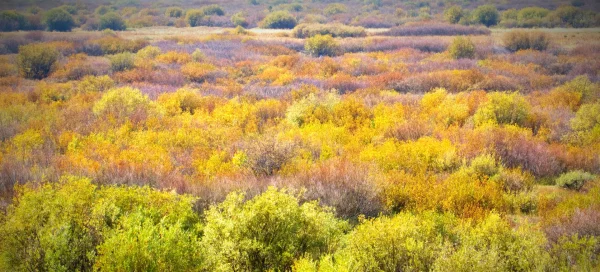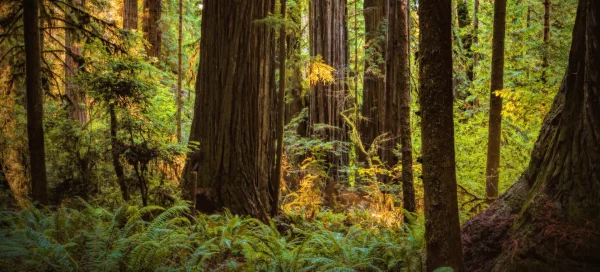Overview
The Australian brush turkey (Alectura lathami), bush turkey or scrub turkey is a large, ground-dwelling bird native to eastern Australia. It is a member of the megapode family known for its unique reproductive behavior of building large incubation mounds to incubate its eggs using heat generated from decomposing vegetation. The species is recognizable by its black plumage, bare red head, and bright yellow throat wattle, which becomes more prominent in males during the breeding season. Brush turkeys are highly adaptable birds, thriving in both natural rainforests and urban gardens, often to the frustration of gardeners.
These nonmigratory birds are primarily terrestrial, foraging on the forest floor for seeds, fruits, insects, and other small invertebrates. Their strong legs and sharp claws are specialized for scratching through leaf litter to find food or to construct their large nesting mounds. Brush turkeys are solitary outside the breeding season but gather at communal feeding areas or near mounds during reproduction. Despite their resilience and adaptability, brush turkeys remain important in Australia’s ecosystems as seed dispersers and contributors to forest floor dynamics.
Although once heavily hunted and facing habitat loss, the Australian brush turkey has remarkably recovered, particularly in suburban areas where they have learned to coexist with humans. Today, they are a common sight in parks and backyards along the eastern coast of Australia. While their adaptability has allowed them to thrive, this behavior occasionally brings them into conflict with people who find their nesting habits and foraging destructive to gardens.
Taxonomy
Kingdom
Phylum
Class
Order
Family
Genus
Species
Type
Current distribution:
The Australian brush turkey is widely distributed along the eastern coast of Australia, from northern Queensland to southeastern New South Wales and parts of northeastern Victoria. It is most common in rainforest regions but has successfully expanded into urban and suburban areas where suitable habitat exists. Urban populations are particularly abundant in cities like Brisbane, Sydney, and the Gold Coast, where they forage in gardens, parks, and green spaces.
Despite being widespread and locally abundant, the species is less common in heavily cleared or degraded landscapes where natural forest cover has been lost. In protected areas, such as national parks and reserves, populations remain stable, benefiting from preserving their natural habitats. Urban adaptation has allowed the species to thrive in some areas, but ongoing habitat destruction and potential human-wildlife conflicts could threaten local populations.
Physical Description:
The Australian brush turkey is a large, stocky bird with a body length of 24–29 inches (60–75 cm) and a wingspan of approximately 39 inches (100 cm). It is predominantly covered in black feathers, which are loose and fluffy, giving it a somewhat disheveled look. The bird’s head and neck are bare, revealing bright red skin, while males display a prominent yellow or orange wattle around their neck that becomes brighter during the breeding season. Females and juveniles have less pronounced wattles and duller coloration overall.
Brush turkeys have strong, muscular legs with sharp claws adapted for digging and scratching through leaf litter. Their tail is long and fan-shaped, often held upright, and their small, rounded wings are adapted for short bursts of flight. The bird’s beak is short and curved, suited for foraging on the ground. Juveniles resemble adults but are smaller, with duller plumage and less vibrant skin coloration on their heads and wattle.

Lifespan: Wild: ~8 Years || Captivity: ~15 Years

Weight: Male: 4.4–6.6 lbs (2–3 kg) || Female: 3.3–5.5 lbs (1.5–2.5 kg)

Length: Male & Female: 24-30 in (60-75 cm)

Height: Male & Female: 32-36 in (81-91 cm)

Wingspan: Male & Female: 33-39 in (85-100 cm)

Top Speed: 16 mph (25 km/h)
Characteristic:
Native Habitat:
The Australian Brush-turkey is found in the forests of eastern Australia, from Far North Queensland to Illawarra in New South Wales. It inhabits rainforests, eucalyptus forests, and dense scrublands, preferring areas with thick undergrowth and a dense canopy. The availability of leaf litter for mound building and food is a critical factor in their habitat selection.
Their adaptation to urban environments has been remarkable, with populations thriving in many suburban areas along the eastern coast. This adaptability has been key to their survival in regions where human activities have altered natural habitats.
Biomes:
Biogeographical Realms:
Continents:
Countries:
Diet:
Diet & Feeding Habits:
Australian brush turkeys are omnivorous, with a diet that includes various foods such as insects, seeds, and fallen fruits. They are particularly adept at foraging through leaf litter using their strong legs and feet to uncover hidden food sources. This foraging provides them with nourishment and plays an important role in forest health, aiding in decomposition and nutrient recycling.
In urban areas, brush turkeys feed on various foods, including food scraps and compost, demonstrating their adaptability to modified environments. They are often observed foraging in gardens and parks, where their raking behavior can sometimes cause conflict with humans. Despite this, their role in controlling insect populations and aerating soil benefits the ecosystem.
Mating Behavior:
Mating Description:
The mating system of the Australian Brush-turkey is unique among birds. Males do not participate in rearing the young; instead, their primary role in reproduction is to build and maintain large incubation mounds. These mounds, made of leaf litter, soil, and compost, can be up to 4 meters wide and 1 meter high. The male constantly tends to the mound, regulating its temperature by adding or removing material.
Females are attracted to males with the best-maintained mounds, where they lay their eggs. Each female may lay up to 24 eggs in a season in multiple mounds. Once the eggs are laid, the male maintains the mound, but the chicks are independent of hatching, receiving no parental care.
Reproduction Season:
Birth Type:
Pregnancy Duration:
Female Name:
Male Name:
Baby Name:
Social Structure Description:
Australian brush turkeys are generally solitary, especially outside the breeding season. However, they may gather in small groups when foraging or in communal roosting areas at night. During the breeding season, males become more territorial around their mounds, while females may visit multiple mounds to lay eggs.
Their social interactions are complex, particularly around the communal nesting mounds, which can be a focal point for competition and mating activities. Understanding their social structure and behavior is key to managing and conserving this unique species.
Groups:
Conservation Status:
Population Trend:
The Australian brush turkey is listed as least Concerned by the International Union for Conservation of Nature (IUCN), indicating a stable and healthy population across its natural range. Commonly found throughout eastern Australia, these birds have demonstrated remarkable adaptability, thriving in traditional forests and woodlands and suburban and urban areas. This adaptability has been crucial in maintaining stable population levels, even as some of their natural habitats have significantly changed due to human activity.
In urban environments, Australian Brush-turkeys are often seen foraging in gardens and parks, showcasing their ability to coexist in altered landscapes. Their success in these areas is partly due to their flexible diet and nesting behavior, which do not rely heavily on undisturbed wilderness. However, their presence in urban areas sometimes leads to conflicts with humans, underscoring the importance of fostering a harmonious relationship between wildlife and urban communities for the continued well-being of this unique species.
Population Threats:
While the Australian brush turkey is classified as least Concerned, it faces ongoing challenges that could impact its future stability. Habitat loss, a significant issue for many Australian species, is particularly concerning for the brush turkey as urbanization and land clearing reduce the availability of natural environments for foraging and nesting. Additionally, introducing predatory species such as foxes and cats poses a serious threat, especially to their eggs and young chicks, vulnerable to predation in the early stages of life.
In urban and suburban settings, where Australian Brush-turkeys are increasingly found, they often encounter conflicts with humans. These conflicts can arise from the birds’ natural behaviors, such as their tendency to forage and disrupt gardens and landscaped areas, leading to situations where they may be harmed or displaced. Local communities must understand and coexist with these native birds, implementing strategies to mitigate negative interactions while appreciating their ecological role.
Conservation Efforts:
Conservation efforts for the Australian brush turkey are primarily aimed at preserving the natural habitats that are crucial for their survival. Protecting and managing forests and woodlands ensures these birds access adequate foraging grounds and suitable locations for their unique mound-building nesting behavior. Alongside habitat conservation, initiatives are also directed at restoring areas that have been degraded, ensuring a long-term, sustainable environment for brush turkeys and other native wildlife.
In urban and suburban areas where brush turkeys are becoming increasingly common, education and awareness programs play a key role in fostering coexistence between humans and birds. By informing residents about the ecological benefits of brush turkeys, such as their role in soil aeration and seed dispersal, and providing practical advice on minimizing conflicts, communities can learn to appreciate and live alongside these unique creatures. Additionally, ongoing research and monitoring are essential to understand their ecology and behavior, particularly in response to changing environments, ensuring that conservation efforts are effective and adaptable.
Additional Resources:
Fun Facts
- Australian brush turkeys are among the few birds using external heat sources (decomposing vegetation) to incubate their eggs.
- Despite their name, brush turkeys are unrelated to those found in North America.
- They have been observed stealing small, shiny objects, which they sometimes incorporate into their mounds.
- Brush-turkey chicks are superprecocial, meaning they are highly independent from the moment they hatch, able to fly and fend for themselves immediately.
- In Aboriginal mythology, the brush turkey is often depicted as a clever and resourceful character.
- The male carefully regulates the incubation mounds’ temperature, usually kept close to a constant 33°C (91°F).
- Brush turkeys are strong swimmers who readily take to water to escape predators.
- In some areas, they are celebrated as a natural garden service, helping to control pests and aerate the soil.
- The male’s wattle changes color in response to stress or excitement, providing a visual signal of its mood.
- They have a distinctive, loud call that can often be heard echoing through the forests of eastern Australia.

